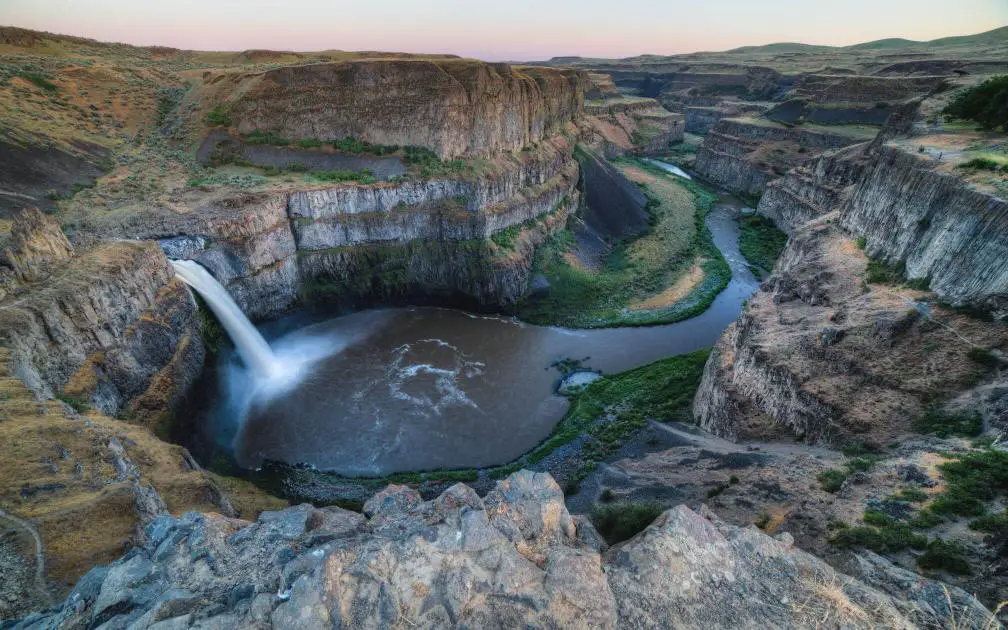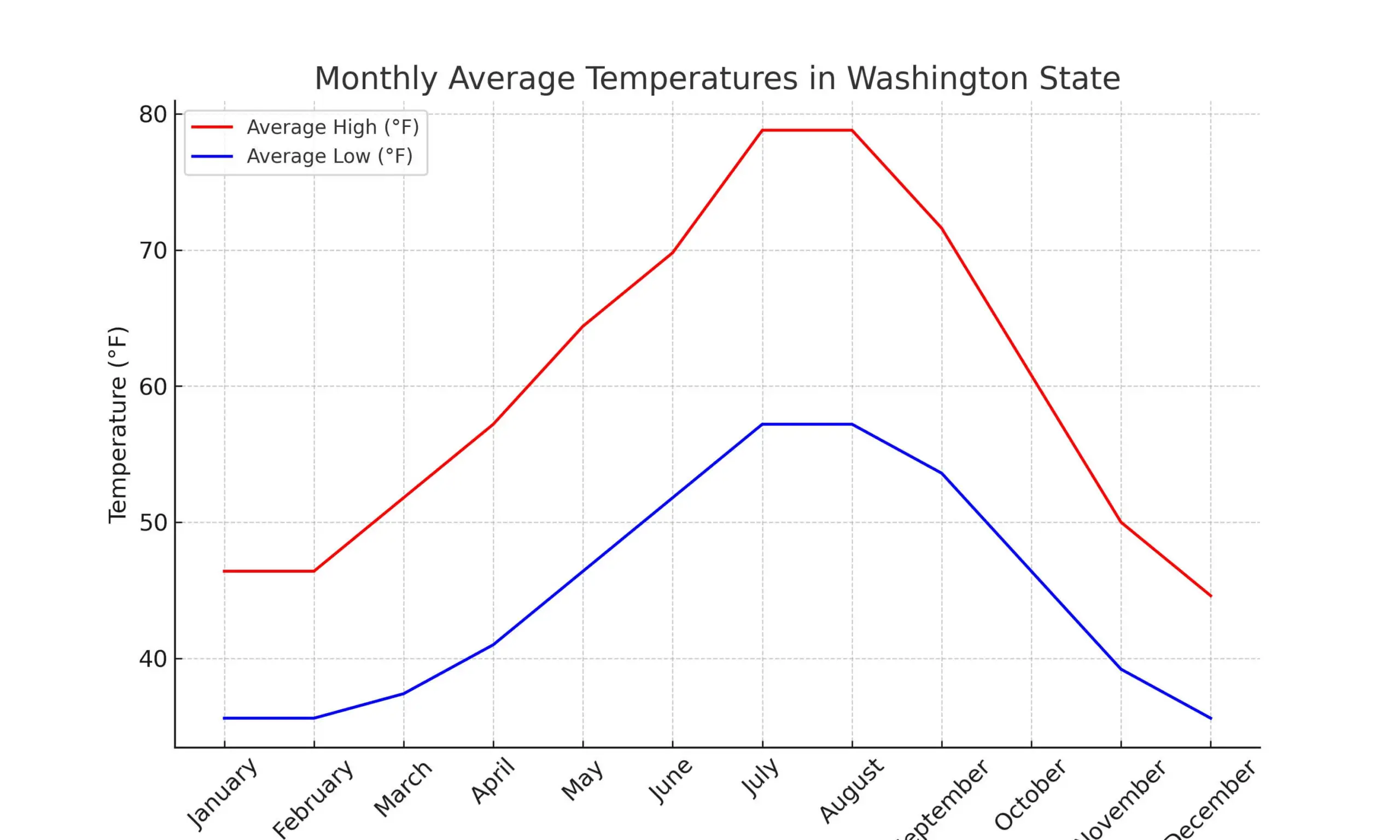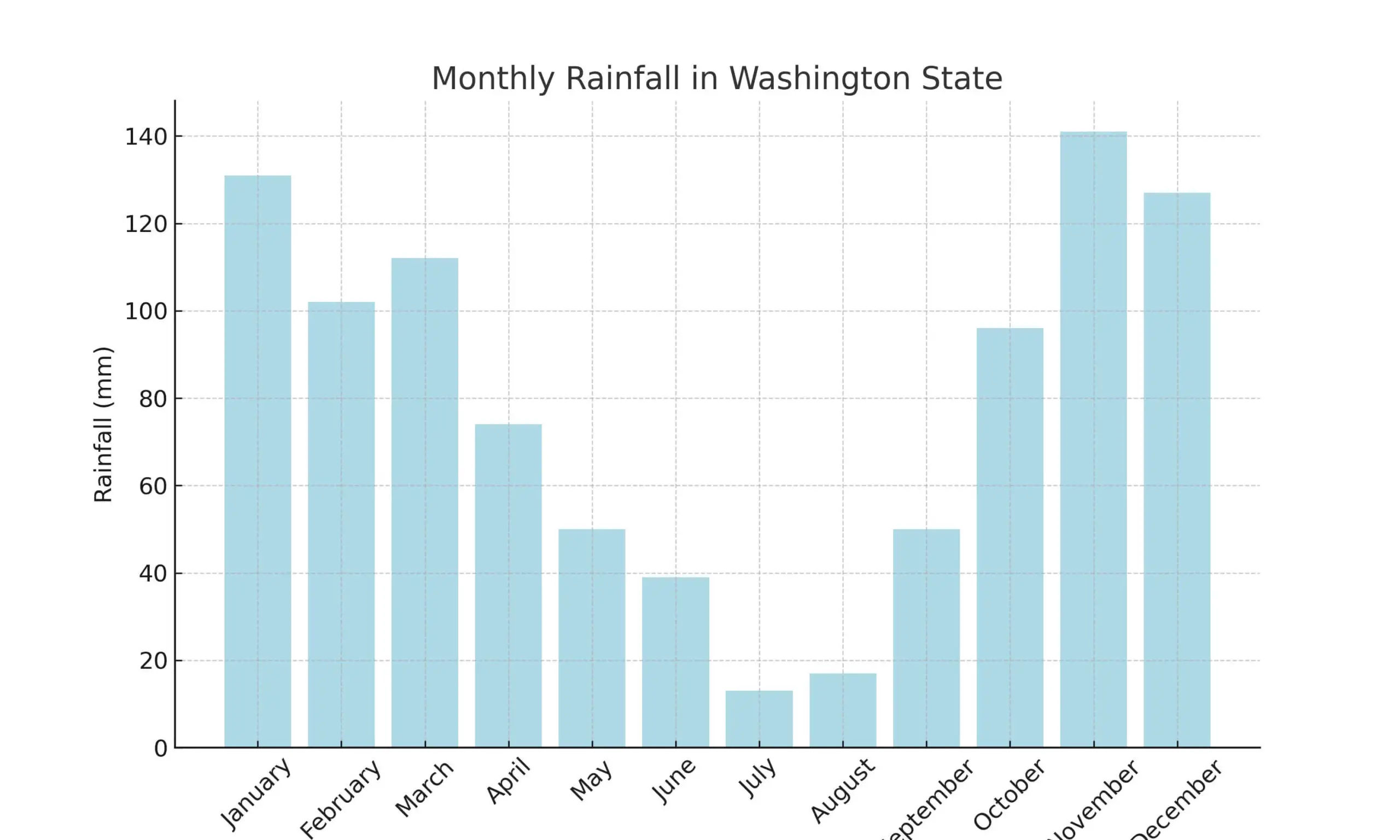Washington States boast a rich list of great sceneries, spanning from its rugged peaks of the Cascade Range to the serene shores of Puget Sound.
With its rich offerings, you must plan right, and timing is crucial as the weather can vary significantly across different regions.
If you’re looking for outdoor adventure in the Cascade Range, the summer months are ideal for hiking and exploring the alpine meadows.
This guide is your backstage pass, offering insider insights on the best and worst times to visit Washington based on weather patterns and activities, helping you tailor your itinerary for an unforgettable trip.
- When is the best time to visit Washington state?
- When is the worst time to visit Washington state?
- Cheapest time to visit Washington State
- Off-season: Least busy time to visit Washington state
- Most expensive time to visit Washington state
- Hottest months in Washington state
- The coldest months in Washington state
- Month-by-month weather in Washington State
- Frequently asked questions

When is the best time to visit Washington state?
July and August are considered the best times to travel to Washington State. The weather is pleasant during these summer months, with warm temperatures and extended daylight hours.
This period allows visitors to fully enjoy the diverse attractions the state offers.
Families from across Washington gravitate toward the San Juan Islands during this dry summer spell, taking the opportunity to witness the renowned orca whales feeding off the shores of San Juan Island.
Additionally, these months serve as the prime festival season in the state, particularly in the Seattle area.
August makes the best camping on the coast, while September is ideal for quieter hiking.


When is the worst time to visit Washington state?
The worst time to visit Washington State falls between November and January. During these winter seasons, the region experiences colder temperatures, increased rainfall, and, in some areas, the possibility of snowfall.
The weather can be damp and chilly, making outdoor activities less enjoyable.
Additionally, some attractions and outdoor recreational areas may have limited accessibility or reduced services during the winter season.
As February and March roll in, certain regions of the state experience significant snowfall, further complicating travel plans.
The abundant snow in these months can create challenging road and travel conditions, impacting accessibility to various destinations.
Cheapest time to visit Washington State
The cheapest time to visit Washington State is winter months, from January to early March.
Typically, these motnhs experience decreased tourism, resulting in businesses offering lower prices and enticing promotions to combat reduced demand.
During this period, many destinations experience a lull in visitor numbers, translating to more budget-friendly options for accommodations, attractions, and other travel services.
Savvy travelers can take advantage of this seasonal downturn to explore destinations at a more cost-effective rate, making it a suitable time for those seeking affordable travel experiences.
Off-season: Least busy time to visit Washington state
The least time to vsit Washington State span from April to June and October which are characterized by a tranquil atmosphere and damp conditions.
These transitional periods, representing early spring and fall, present an opportune time for a visit if your goal is to steer clear of crowds and embrace the unpredictability of the weather.
While there’s a likelihood of rain, there’s also a chance of experiencing splendid spring or fall days.
Securing camping spots without reservations is feasible during these seasons, and you won’t encounter lengthy queues at major attractions.
Most expensive time to visit Washington state
The most expensive time to visit Washington State is July and August which mark the peak of warmth and dryness in Washington, constituting its high season.
During this period, even the residents of Seattle, often accustomed to overcast skies, experience a generous dose of sunshine.
Most visitors choose to explore the region during the summer and early fall, from July through September.
As demand surges, hotel prices rise, and popular neighborhoods and significant tourist attractions witness more people, contributing to a vibrant and bustling atmosphere.
Hottest months in Washington state
The hottest month in Washington State is July. It records an average high temperature of 89°F and a low of 72°F during this month.
The hot season spans about 3.7 months, from late May to mid-September, with an average daily high temperature exceeding 82°F.
Seattle, situated in the state’s western region, experiences milder temperatures compared to eastern Washington, which is closer to the mountains.
Generally, the western region is warmer than the eastern part, and coastal areas are more relaxed than inland regions.
Although there are annual variations, July is known for its relatively consistent temperatures across the state.
The coldest months in Washington state
The coldest months in Washington state is January, which is mainly characterized by a notable temperature range, featuring an average low of 35°F and a high of 54°F.
This cold season extends over 2.9 months from early December to early March, emphasizing an average daily high temperature below 60°F.
The duration and temperature thresholds indicate prolonged chilly weather, likely leading to winter conditions such as frost and snow.
Residents and visitors during this time are advised to use warmer clothing and heating systems.
Month-by-month weather in Washington State
A table showing the weather month by month
| Month | Average High (°C) | Average Low (°C) | Rainfall (mm) | Condition |
| January | 8 | 2 | 131 | Very cold |
| February | 8 | 2 | 102 | Cool and wet |
| March | 11 | 3 | 112 | Milder temperatures |
| April | 14 | 5 | 74 | Softer and more consistent temperature |
| May | 18 | 8 | 50 | Pleasant spring weather with warmer temperatures |
| June | 21 | 11 | 39 | Warm and dry |
| July | 26 | 14 | 13 | Hot Low rainfall |
| August | 26 | 14 | 17 | Low precipitation |
| September | 22 | 12 | 50 | Dry with low precipitation |
| October | 16 | 8 | 96 | Cold |
| November | 10 | 4 | 141 | Cold |
| December | 7 | 12 | 127 | Very cold |
Frequently asked questions
Which tourist attraction holds the top spot in Washington State?
Olympic National Park is Washington’s largest tourist attraction.
It spans approximately a million acres and features distinct temperate rainforests and scenic beaches, making it an ideal destination for outdoor enthusiasts.
When can you see cherry blossoms in Seattle?
Cherry blossoms in Seattle are typically most visible in mid-March when many cherry trees on the western half of the state start to bloom.
Since the flowers last only a few days, planning your trip carefully is essential to catch them in full bloom.
Which is a more preferable destination to visit, Washington or Oregon?
Washington outshines Oregon in terms of development along its western half, rendering it a more favorable destination for cultural entertainment.
In contrast, Oregon takes the lead in offering a wealth of natural wonders and nearby attractions.
Is Washington cheap or expensive?
Washington is known for its higher-than-average housing costs, making it a relatively expensive state. However, visitors can find various amenities and pricing options, including affordable lodging around Seattle.
Venturing beyond the city and purchasing meals separately from the hotel you’re lodged in can substantially decrease the trip’s overall cost.
What food is Washington most known for?
Washington is renowned for its coastal seafood delights, abundant in the state’s western region.
The local preference leans toward salmon, although chicken and beef options are equally accessible. The state boasts a rich variety of beverages, including wine and coffee.
In Seattle, a prominent port city with a substantial population of Asian immigrants, diverse international flavors and flair are prevalent in numerous Asian restaurants.
